Let me introduce you to some of the equipment the DOM team uses while in the field to help us understand the make-up of the Dry Valley streams and to aid us in the collection of bacteria and DOM.
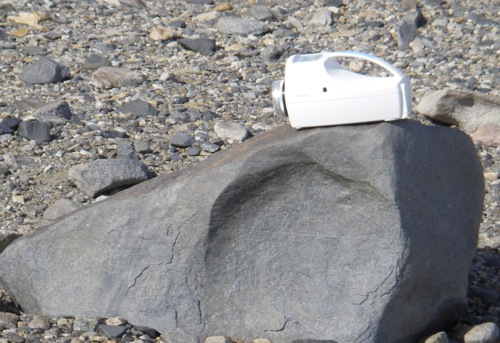
Birgit is our resident air-borne bacteria expert and she uses the Air Sampler to collect bacteria that is floating through the air in the Dry Valleys. We affectionately call the Air Sampler, "the Vacuum." As Birgit walks to stream sites and while we are at a stream, "the Vacuum" is quietly sucking air through filters. Bacteria stick to the filters and back in the lab Birgit can look at the filters and see what types of bacteria are floating through the Dry Valley air.
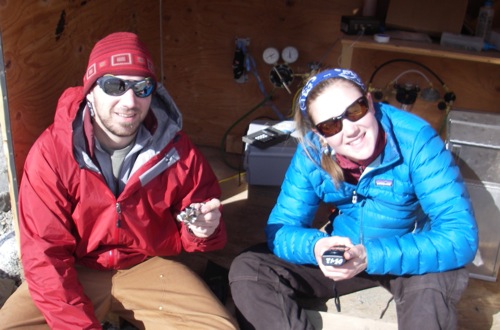
Before we really get into sampling the water and recording data about a stream, we always make sure our equipment is working correctly by checking the accuracy of it through calibration. We also record the latitude and longitude of the sampling site with GPSA Global Positioning System (GPS) is a satellite-based navigation system used to track the location or position of objects on the Earth’s surface.. Christine will use the GPSA Global Positioning System (GPS) is a satellite-based navigation system used to track the location or position of objects on the Earth’s surface. information that the DOM team records in future years to ensure that she is sampling from a similar area of each stream from year to year.
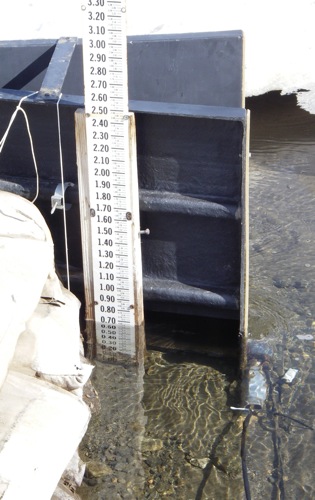
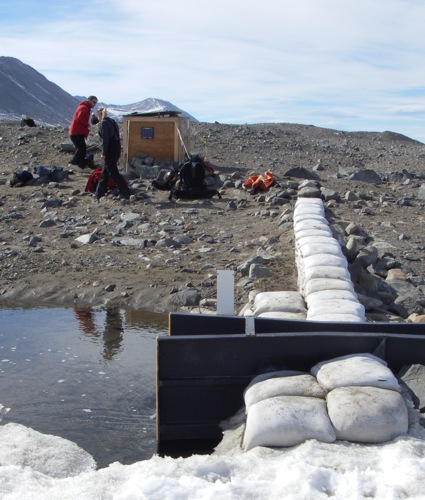
There is a semi-permanent weir in place at Canada Stream. The weir helps direct the flow of the Stream through a specific site. Attached to the weir is a Depth Gauge that the DOM team uses to record the depth of the stream. Also, there are a couple instruments housed in a large plywood box just a few meters from the stream edge. The instruments in this box measure the height, temperature, and conductivity of the stream. Another cool thing about the box containing the Stream Gauge equipment is that it is large enough for one or two people to hide out in if the weather all of a sudden becomes really bad or there is another type of emergency.
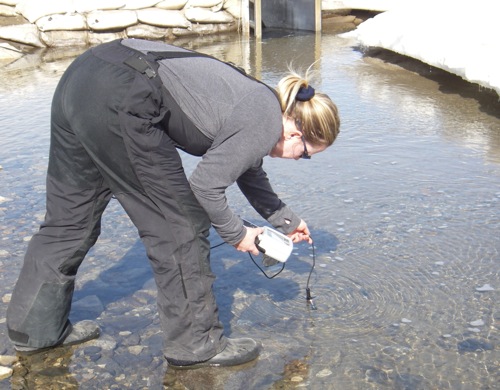
The DO Meter that Christine is dipping into the stream measures the amount of dissolved oxygen (DO) that is in the water and it also records the temperature of the stream. Dissolved oxygen is important, because a bacterium needs oxygen within the water in order to survive. When using a DO Meter, Christine taught the DOM team that we need to jig the Meter's probe up and down in the water, because the dissolved oxygen in the stream flows over a membrane on the probe and the jigging motion helps in getting the correct measurement.
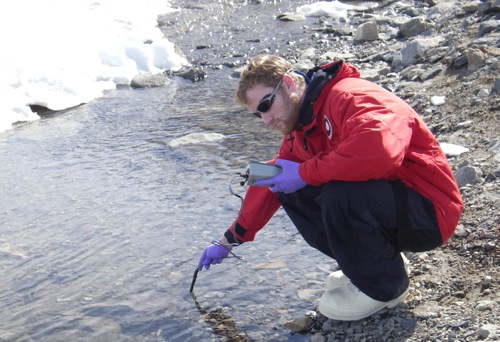
Collin has the probe for the pH Meter in the Canada Stream in the picture above. pH is used to measure how acidic or basic a liquid is. A pH of 7 is neutral, above 7 is basic, and below 7 is acidic. The pH Meter Collin used at the Canada Stream recorded the pH of the Stream at 7.25- pretty darn close to neutral!
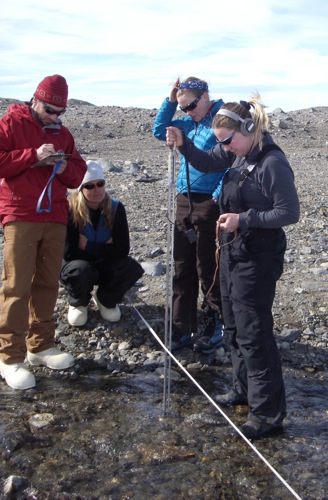
The Pygmy Meter that Christine is holding in this picture is used to determine the velocity, or rate of flow, of the stream. The Pygmy Meter is one of the pieces of equipment that we calibrate every time before we use it to collect data. To figure out the velocity of the stream, we place the Pygmy Meter down in the water in 27 evenly spaced places across the stream. The Pygmy Meter looks a bit like an anemometer- a piece of equipment used to measure wind speed. Attached to the Pygmy Meter is a pair of headphones. When we place the Meter underwater, the "cups" of the Meter spin around and emit a clicking noise for every full revolution of the "cups." The person wearing the headphones counts the number of clicks in a 40 second interval. The DOM team uses specific calculations to determine the velocity of the stream using the information recorded in the 27 sections of the stream. The Pygmy Meter is the most time-consuming of all the stream measuring equipment we have- it takes about 45 minutes to complete the 27 measurements.
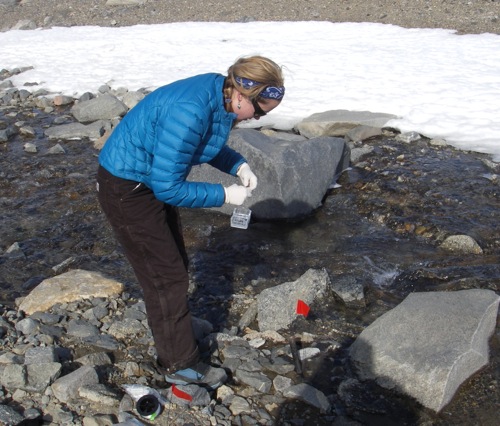
One of the ways the DOM team is figuring out the types of bacteria in a stream is by seeing what bacteria settle onto glass slides as a biofilm. Heidi built a great holder that keeps 4 glass slides (the kind used under a regular microscope) underwater for days at a time. Bacteria form a film on the slides that Heidi and Christine can then look at under a microscope. Whew, it was a long day of learning and practicing all the equipment. It is now 10:30 pm- the sun is still high in the sky, but I am ready to curl up in my tent for a good night sleep. We are sampling at another stream tomorrow! I love that the science part of the DOM expedition is beginning!


Comments